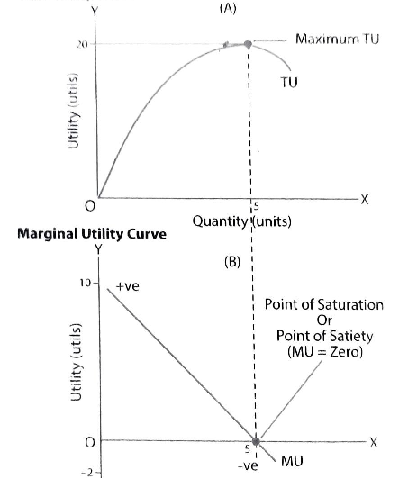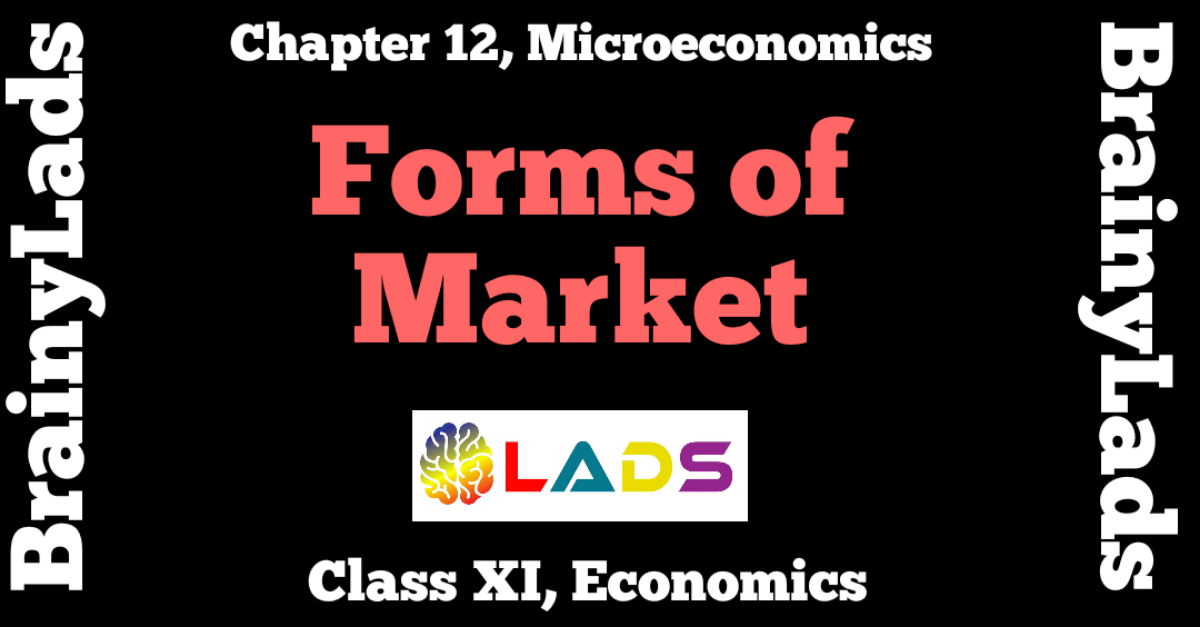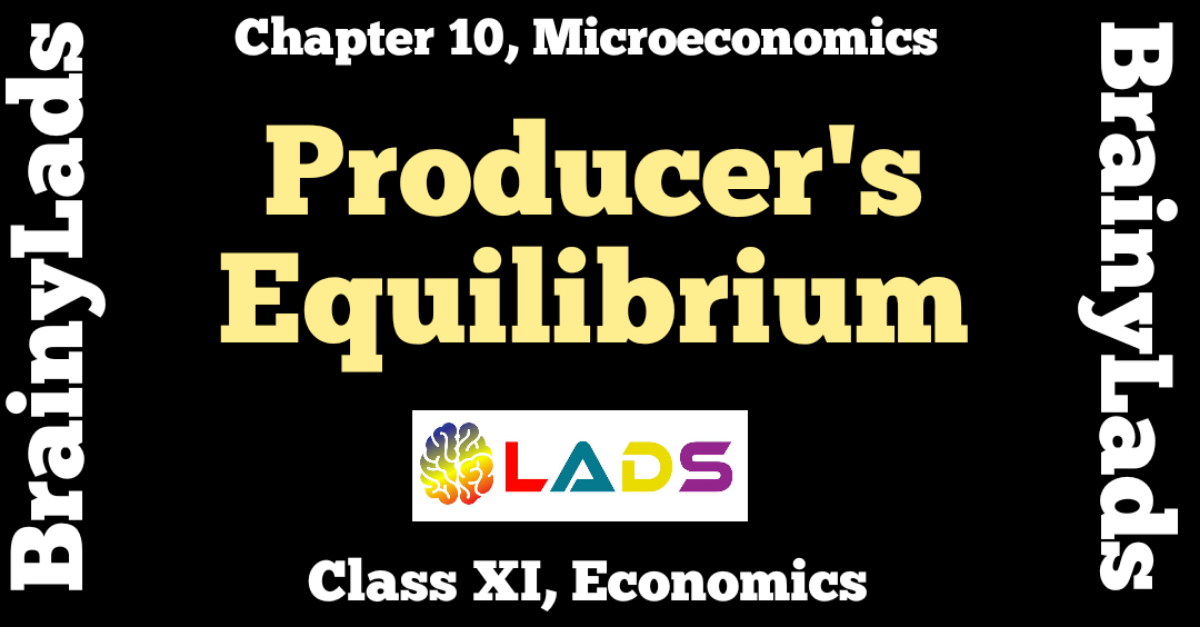Consumer Equilibrium Utility Analysis Class 11 | Chapter 3 | Economics |
Table of Contents
Consumer Equilibrium Utility Analysis Class 11 | Chapter 3 | Economics |
Consumer: A consumer is an economic agent who buys goods and services for the satisfaction of his wants.
Utility: Want satisfying power of a commodity is utility. Its measurement unit is utils. Utility is classified in two types: Total utility (TU) and Marginal utility (MU).
Total Utility: It is the sum total of the utilities which a consumer get from the consumption of all the units of a commodity.
TU= SIGMA MU
Marginal Utility: It is an extra utility derived from the consumption of an additional unit of a commodity.
MU=TUn – TU_(n-1) or MU= delta TU / delta Q
Relationship between TU and MU
|
X Commodity units |
TU | MU |
| 0 | 0 | |
| 1 | 20 | 20 |
| 2 | 35 | 15 |
| 3 | 45 | 10 |
| 4 | 50 | 5 |
| 5 | 50 | 0 |
| 6 | 45 | -5 |

- As more and more units of a commodity are consumed, MU declines.
- When TU increases at a diminishing rate, MU diminishes.
- When MU is zero, TU is maximum. This point is known as point of saturation or point of safety.
- When MU is negative, TU declines.
- When MU is positive, TU increases.
- MU declines due to law of diminishing marginal utility.
Law of Diminishing Marginal Utility
This law was initially propounded by a German economist H.H. Gossen but was formulated by Alfred Marshall. According to this law, as more and more units of a commodity are consumed, the MU derived from each successive (additional) units goes on declining. It is the first law of Gossen. It is the also known as Fundamental law of satisfaction or Fundamental Psychological law.
Assumptions –
- There should be no change in consumer’s taste and price of the commodity.
- Only standard units of a commodity are consumed.
- Consumption of a commodity must be continuous.
Exceptions –
- The law does not apply to alcoholic drinks and music
- The law does not apply to hobbies, antiques, music and very small units.
Schedule
| Units | MU |
| 0 | |
| 1 | 30 |
| 2 | 20 |
| 3 | 10 |
| 4 | 0 |
| 5 | -10 |

Consumer Equilibrium Utility Analysis
A consumer is in equilibrium when he, given his income, checks the market price, he plans his expenditure in such a manner that consumer can maximize his total satisfaction.
Assumptions –
- Consumer is rational.
- Consumer income is given, price of commodity are given and constant.
One Commodity Case
Equilibrium — MUx/Px = MUm
MUx – It refers to marginal utility of good X.
Px – It represents the market price which is assumed to be constant.
MUm – It refers to marginal utility of money. It is the worth of a rupee which is assumed to be constant and it is a measuring rod for the rupee worth of satisfaction.
Schedule –
Let marginal utility of money = 4 utils (referring to the utility he expect to receive when he spends Rs1) and price of good X = Rs 4.
| Units | MUx | Px | MUm |
| 1 | 20 | 4 | 5 |
| 2 | 18 | 4 | 4.5 |
| 3 | 16 | 4 | 4 |
| 4 | 10 | 4 | 2.5 |
| 5 | 0 | 4 | 0 |
| 6 | -4 | 4 | -1 |

Observation
- MUx always slopes downward due to law of diminishing marginal utility.
- Px represents the market price which is assumed to be constant.
- Each point on MUx shows MUx in terms of money. At that point, the price he is willing to pay for each successive unit of good X.
- Equilibrium is struck at point E. At that point the price he is willing to pay is exactly equal to the price he actually pays.
- In diagram, shaded portion represents consumer surplus at that point the price he is willing to pay is more than the price he actually pays.
RELATED
Two or More Commodity Case
Equilibrium – MUx/Px = MUy/Py = MUm
In the two or more commodities case, equilibrium is obtained by law of equi-marginal utility. Consumer’s income has to be equal to his expenditure.
Suppose a consumer wants to spend Rs10 on two commodities X and Y, the price of which are Rs1 per unit and marginal utility of money is 4 utils.
| Units | MUx | MUy | MUx/Px | MUy/Py | MUm |
| 1 | 14 | 10 | 14 | 10 | 4 |
| 2 | 12 | 8 | 12 | 8 | 4 |
| 3 | 10 | 6 | 10 | 6 | 4 |
| 4 | 8 | 4 | 8 | 4 | 4 |
| 5 | 6 | 2 | 6 | 2 | 4 |
| 6 | 4 | 0 | 4 | 0 | 4 |
| 7 | 2 | -1 | 2 | -1 | 4 |

In order to be in equilibrium consumer will buy 6 units of X commodity and 4 units of Y commodity where
MUx/Px = MUy/Py = MUm i.e 4 = 4 = 4
Here, income= expenditure
10 = (1*6)+(1*4)
10 = 10
M = (Px.qx)+(Py.qy)
Here in order to obtain equilibrium, the consumer will buy 6 units of X commodity and 4 units of Y commodity.
Here, M = (Px.qx)+(Py.qy)
10 = (1*6)+(1*4)
10 = 10
Various Situations
1) If MUx/Px > MUm
As a consumer, equilibrium is reached when MUx=Px
(in terms of money)
In case Px falls, gain in terms of MUx becomes greater than sacrifice in terms of Px. Thus MUx > Px
This induces consumer to buy more of good X. As consumption of X increases, MUx will decline, in accordance with the law of diminishing marginal utility. Consumer shall stop at a point when MUx=Px.
2) If MUx/Px < MUm
Here consumer will buy less of good X.
3) When MUx/Px > MUy/Py
By spending a rupee on good X, the consumer will get greater satisfaction than in case of good Y. So, accordingly he will spend more on good X then on good Y. As consumption of X increases MUx will fall and as consumption of Y falls MUy will rise. The consumer will stop buying more of X, MUy will rise. The consumer will stop buying more of X in place of Y only when MUx/Px = MUy/Py
4) If MUx/Px < MUy/Py
Here, consumer will buy less of good X but more of good Y.
Do share this post if you liked the notes of Consumer Equilibrium Utility Analysis Class 11. For more updates keep logging on BrainyLads




Wow it is easy to learn .this notes is very helpful to every .👍
It’s very Esay and Simple, Especially for Poor Students.You can easily Understand.